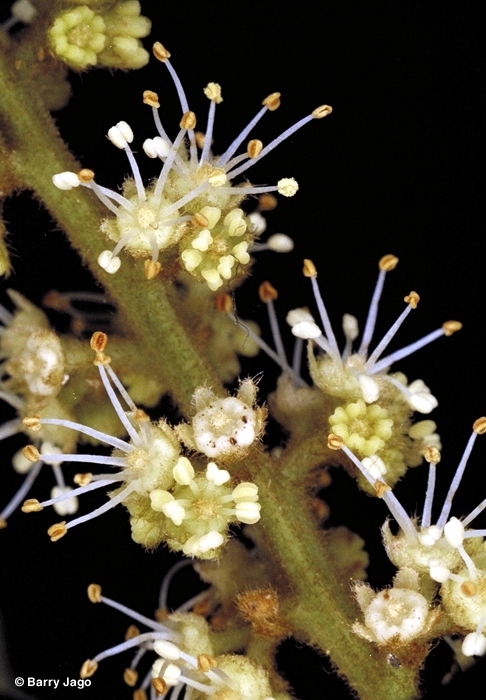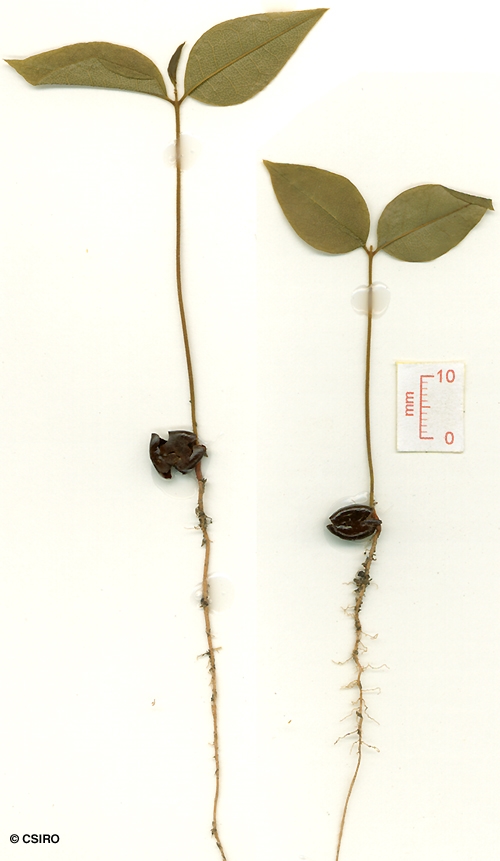Australian Tropical Rainforest Plants - Online edition
Mischocarpus lachnocarpus (F.Muell.) Radlk.






Radlkofer, L.A.T. (1879) Actes du Congres International de Botanistes .. Amsterdam for 1877 : 113.
Apple, Woolly Brush; Woolly Brush Apple; Woolly Fruited Mischocarp; Woolly Pear Fruit
Seldom grows beyond 30 cm dbh.
Petals absent. Stamens eight. Disk annular, puberulous.
Fruits villous or velvety on the outer surface, about 1.3-2 cm long (including the stipe) x 0.6-2 cm. Capsule subglabrous inside, sutures slightly villous. Seeds about 7-8 x 6 mm, completely enveloped by the aril.
First pair of leaves ovate-lanceolate or elliptic, blades about 5-25 mm long. At the tenth leaf stage: leaf or leaflet blades ovate or ovate-elliptic, about 6-8 cm long, upper surface hairy along midrib; petiole, terminal bud and stem clothed in rusty, upright hairs. Seed germination time 36 to 88 days.
Occurs in CYP and NEQ. Altitudinal range from sea level to 1100 m. Grows as an understory tree in well developed rain forest on a variety of sites. Also occurs in New Guinea.





